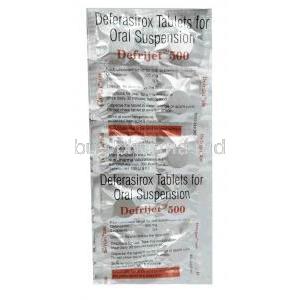Ethamsylate
- I. Introduction
- II. Uses of Ethamsylate
- III. How Ethamsylate Works
- IV. Off-Label Uses of Ethamsylate
- V. Dosage and Administration
- VI. Composition
- VII. Side Effects of Ethamsylate
- VIII. Interactions with Other Drugs
- IX. Warnings and Contraindications
- X. Careful Administration and Important Precautions
- XI. Special Populations:
- XII. Overdose: Recognizing and Managing
- XIII. Storage and Handling Precautions
I. Introduction
Ethamsylate, also known as 2,5 dihydroxybenzenesulfonate, has a historical medical background. It was first synthesized in the mid-20th century. It has since become a crucial therapeutic agent for treating bleeding disorders. Ethamsylate's unique chemical properties and therapeutic potential were quickly recognized, leading to research and its eventual use in medical treatments. Today Ethamsylate is widely regarded as a drug in hematology, offering its benefits across various clinical scenarios. It symbolizes the progress made in science rather than being just an ordinary medication.
II. Uses of Ethamsylate
Ethamsylate is a synthetic hemostatic agent that is not approved by the FDA1. It is used in some countries for the treatment of capillary hemorrhages, which are bleeding from small blood vessels due to various causes, such as trauma, surgery, obstetrics, or bleeding disorders23. It improves platelet adhesiveness and restoring capillary resistance, which are the first steps of blood clotting or hemostasis23. It may help optimize patient outcomes by reducing bleeding time and blood loss and by preventing complications from excessive blood loss23. However, it may also have some side effects, such as nausea, headache, skin rash, or allergic reactions3. Therefore, it should be used with caution and under medical supervision.
Some possible references with HTML links are:
1: CALCIUM DOBESILATE MONOHYDRATE - National Center for Advancing Translational Sciences 2: Use of etamsylate as a hemostatic agent in surgery 3: Etamsylate (Sylate), Mechanism of Action, Indication and Dosage
III. How Ethamsylate Works
The cellular-level mechanism of how Ethamsylate works is quite intricate. Its main goal is to improve platelets' stickiness and strengthen capillaries' resistance, creating a condition for effective blood clotting. When it comes to platelet adhesion and the stability of walls, Ethamsylate plays a crucial role by enhancing the interaction between platelets and collagen as well as maintaining the integrity of capillary endothelial cells. This ensures defense against unexpected bleeding. Regarding the timeframe for its effects, Ethamsylate typically starts showing its benefits within 2 to 3 hours after administration. These effects last for hours, often persisting for up to 6 hours, providing extended therapeutic coverage.
IV. Off-Label Uses of Ethamsylate
Ethamsylate is a hemostatic agent that is used to prevent or control abnormal bleeding in conditions like periods and dysfunctional uterine bleeding (any bleeding from the vagina that varies from a woman’s normal menstrual cycle)12. It may also be used to prevent or reduce bleeding before, during or after delicate surgeries12. These are the primary indications of ethamsylate, which are approved by some regulatory bodies, but not by the FDA3.
Ethamsylate has also attracted interest for various off-label applications, which are not approved by any regulatory body. These include:
- Neonatal intraventricular hemorrhage, a type of bleeding in the brain of premature infants. Ethamsylate may help reduce the risk and severity of this condition4.
- Melena, a type of bleeding in the gastrointestinal tract that causes black, tarry stools. Ethamsylate may help stop the bleeding and prevent complications like anemia or shock4.
- Hematuria, a type of bleeding in the urinary tract that causes blood in the urine. Ethamsylate may help control the bleeding and reduce pain or discomfort4.
- Epistaxis, a type of bleeding in the nose that causes nosebleeds. Ethamsylate may help stop the bleeding and prevent recurrence4.
- Secondary bleeding caused by thrombocytopenia, a condition where the blood has a low number of platelets, which are essential for clotting. Ethamsylate may help improve platelet function and prevent excessive bleeding4.
Off-label use of ethamsylate is based on anecdotal reports and patient experiences, as well as some evidence from less rigorous clinical studies or case reports5. However, it may not be practical or safe for everyone, and it may have some side effects, such as nausea, headache, skin rash, or allergic reactions24. Therefore, it is crucial to exercise heightened caution when venturing into off-label usage and to consult with a doctor before taking ethamsylate for any condition. It is essential to weigh the therapeutic benefits against any unforeseen adverse reactions in order to prioritize patient safety.
References:
1: Ethamsylate: View Uses, Side Effects and Medicines | 1mg 2: Ethamsylate - Uses, Dosage, Side Effects, Price, Composition - Practo 3: Etamsylate - Wikipedia 4: Ethamsylate - Uses, Side Effects, Substitutes, Composition … - Lybrate 5: Etamsylate | Uses, Dosage, Side Effects, FAQ - MedicinesFAQ
V. Dosage and Administration
Standard dosages of Ethamsylate are commonly prescribed; they may need to be adjusted based on individual clinical circumstances. Depending on patient profiles, adults may receive doses ranging from 500mg to 1500mg. Ethamsylate offers administration options, including oral tablets, injectable solutions, and even topical formulations, making it convenient for diverse clinical needs. When determining the dosage adjustments for a patient, factors such as age, concurrent medications being taken, liver and kidney function, and the severity of the condition being treated all play a role in decision-making.
VI. Composition
Ethamsylate, which belongs to the benzenesulfonate class of compounds, has a chemical structure. It contains hydroxyl groups that contribute to its pharmacological properties. When it comes to drug formulations, Ethamsylate is the ingredient, but it can be combined with various excipients, stabilizers, and binders to ensure stability and improve its bioavailability. Regarding how it behaves in the body (pharmacokinetics), it goes through a series of physiological processes. After being taken, it is quickly absorbed into the bloodstream, distributed throughout different tissues in the body, metabolized in the liver, and eliminated mainly through urine.
VII. Side Effects of Ethamsylate
An overview of the side effect profiles; Ethamsylate has potential side effects like any medication. However, it is generally considered safe as adverse reactions are temporary and manageable. Common Side Effects; Frequency and categorization; Common side effects may include issues, skin reactions, or occasional dizziness. These effects are usually mild. Tend to resolve on their own. Management and mitigation strategies; Depending on the severity and persistence of these effects, management adjusting the dosage or temporarily stopping the medication might be recommended. Rare but severe side effects and their implications; In cases, hypersensitivity reactions or hematological disturbances may occur. These require medical attention and could result in discontinuation of the treatment.

VIII. Interactions with Other Drugs
You may encounter everyday drug interactions; When Ethamsylate is taken with medications, like anticoagulants or antiplatelets, it can. Enhance or reduce their effects, potentially affecting the effectiveness of the treatment. It is essential to be aware of these interactions to avoid increased risk of bleeding or decreased benefits. Regular laboratory tests, clinical evaluations, and possibly adjusting the dosage may be necessary to ensure therapy despite potential drug interactions.
IX. Warnings and Contraindications
There are situations where it's best to avoid using Ethamsylate even though it can be effective. In some scenarios, its use may not be recommended or should be cautiously approached. It's important to note that patients with hypersensitivity to Ethamsylate or any of its components should not use it. Additionally, using Ethamsylate with anticoagulants or patients with specific bleeding disorders might not be advisable. It's worth keeping up with the information as medical literature constantly evolves. Recent findings suggest that caution should be exercised when using Ethamsylate in patients with insufficiencies or those taking nephrotoxic medications.
X. Careful Administration and Important Precautions
Special considerations for populations at risk; Certain groups of people, such as those with compromised liver or kidney function, may require careful dosage adjustment or even avoiding using Ethamsylate altogether. To ensure effective use, it is crucial to administer the correct dose, follow recommended intervals, and be aware of possible interactions with other medications. Regular monitoring of hemoglobin levels, kidney function tests, and liver enzymes can provide information about the drug's effectiveness and any potential side effects.
XI. Special Populations:
Administration to the Elderly
Adjustments and monitoring for changes related to aging: patients' physiology may differ, so we might need to adjust the dosage accordingly. It's also essential to monitor their kidney and liver function. Regarding the safety and effectiveness of Ethamsylate in patients, it is generally well tolerated. However, we need to be vigilant about any adverse reactions especially considering that older people often take multiple medications simultaneously.

Administration to Pregnant Women and Nursing Mothers
Based on current knowledge, there are known or potential risks to the health of babies and newborns; Ethamsylate is considered to have minimal teratogenic effects. However, since there is research on its impact on human pregnancy, it is advisable to take a cautious approach. Regarding its use during breastfeeding, although there is no evidence of harm to infants through breast milk, it would be prudent to watch for any possible reactions in breastfed babies.
Administration to Children
Dosage and administration guidelines for children; It's important to remember that children are not just versions of adults. Their unique physiological characteristics require dosing algorithms, often adjusted based on body weight or surface area. Safety and effectiveness in populations; Due to the ongoing development of their physiology, children may exhibit different therapeutic and adverse reactions compared to adults. However, ethamsylate continues to demonstrate a profile in this regard as long as appropriate monitoring is implemented.
XII. Overdose: Recognizing and Managing
Signs and symptoms of an overdose of Ethamsylate; If someone takes much of it, they may experience various symptoms such as digestive issues or more concerning problems like feeling dizzy or disoriented. The initial steps for managing the situation involve providing relief for the signs and decontaminating the system using activated charcoal. After that, the focus shifts to providing support and monitoring the individual. In cases with prompt intervention, the outlook is generally favorable. Recovery is typically smooth. It's essential to keep an eye out for any delayed effects that may occur.
XIII. Storage and Handling Precautions
Here is the paraphrased version; It is best to store Ethamsylate in a dry place away from direct sunlight and moisture to maintain its stability and effectiveness. When handling the medication injectable forms, it is essential to use aseptic techniques and ensure that the packaging remains intact to preserve its longevity and efficacy. When disposing of unused Ethamsylate, it should be done following local regulatory guidelines to protect the environment and prevent accidental consumption.









